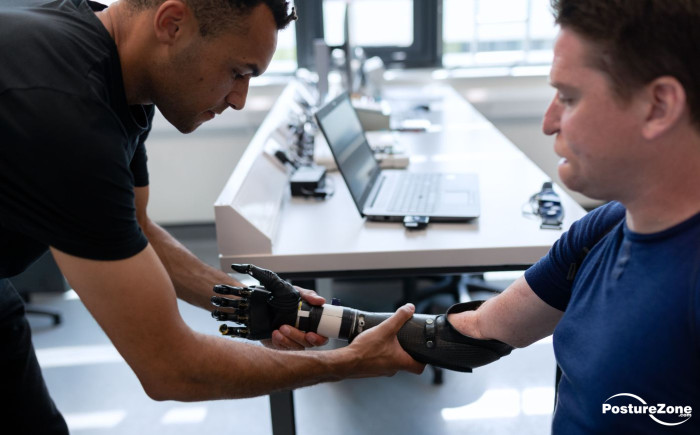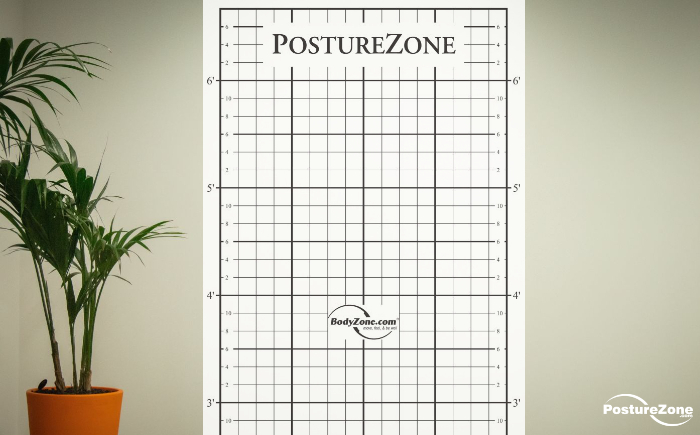Unlocking Motivation: Leveraging Posture in Physical Therapy
Posted by Renee North, CPEP on 12th Aug 2024
Empowering Patients Through Nonverbal Cues
In the field of physical therapy, fostering patient motivation is pivotal for achieving desired rehabilitation outcomes. While traditional methods like goal-setting and positive reinforcement are well-established, an often overlooked yet powerful tool lies in the observation and discussion of posture.
Posture serves as a window into an individual's physical and psychological state, offering valuable insights for physical therapists across various settings, from private practices to hospital clinics. By incorporating posture assessment and reinforcement into physical therapy education and treatment plans, therapists can unlock new avenues for motivating patients and enhancing overall engagement.

The Mind-Body Connection in Rehabilitation
From orthopedic conditions like back pain and joint replacements to neurological disorders such as stroke recovery, to fitting orthotics, posture plays a critical role in physical function and quality of life. Poor posture can exacerbate pain, limit mobility, and contribute to a negative self-perception, hindering progress. Conversely, improved posture can alleviate physical discomfort, promote efficient movement patterns, and instill a sense of confidence in patients.
By incorporating posture assessment into initial evaluations and subsequent follow-ups, physical therapists gain valuable insights into a patient's physical and emotional well-being. Installing a posture assessment grid in the clinic environment facilitates a systematic approach to documenting and tracking postural changes throughout the rehabilitation journey.
Unleashing the Power of Positive Reinforcement
As patients progress through their treatment plans, celebrating postural improvements can serve as a powerful motivational tool. When physical therapists acknowledge and reinforce positive changes in posture, they validate the hard work and dedication of their patients, fostering a sense of accomplishment and self-efficacy.
Encouraging patients to maintain upright, aligned postures during exercise sessions and activities of daily living can further reinforce these positive habits. Physical therapists can incorporate posture-specific exercises, mirror work, and postural cuing to enhance body awareness and promote long-term postural health.
Enhancing Athletic Performance
In the realm of sports medicine, optimal posture is crucial for maximizing performance, reducing injury risk, and promoting recovery. Physical therapists working with athletes can leverage posture assessment and reinforcement to identify and correct imbalances, improve biomechanics, and boost overall confidence on and off the field.
By celebrating postural improvements, therapists can motivate athletes to embrace proper form and body mechanics, ultimately enhancing their ability to perform at their highest potential while minimizing the likelihood of setbacks or recurring injuries.
Whether in a clinical or sports setting, integrating posture observation and reinforcement into physical therapy practice can unlock new avenues for patient motivation, engagement, and overall well-being. By leveraging the power of nonverbal cues, physical therapists can empower individuals to take an active role in their recovery, instilling a sense of accomplishment and resilience that extends far beyond the clinic walls.
Posture Grids in a Physical Therapy Practice
- Wall Grids - Fits any body type/height. Available in Metric for for European therapists and researchers. Great for private practice and hospital environments.
- Door Grid - Slimline grid that fits any door or limited wall space. Best option for small or shared offices.
- Portable Grid - Sets up easily and can be brought to home sessions.
Learning Posture Assessment for Psychologists and Mental Health Therapists:
- Posture Pictures Assessment Class - 90 minutes, on-demand videos how-to class.
- Posture Pictures - How-to book that includes instructions, tips, forms, flyers and questionnaire.



